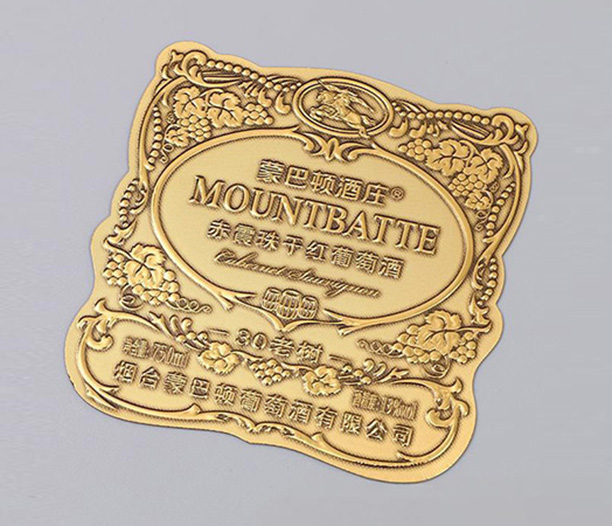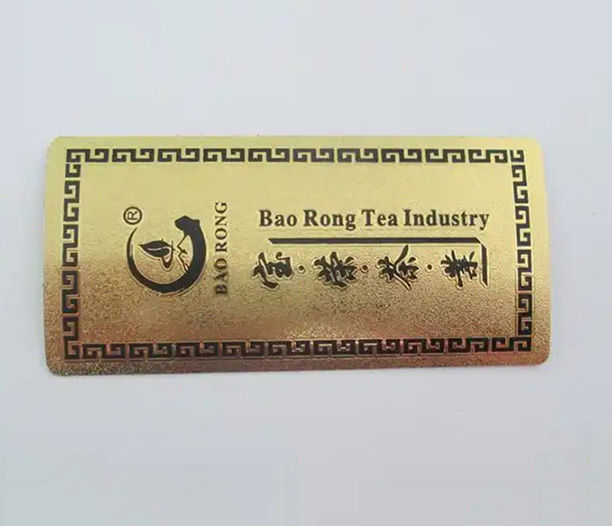In a world saturated with digital impressions, the tangible impact of a physical object bearing your brand's mark holds a unique power. Custom metal logo plates are more than just labels; they are durable, prestigious emblems of identity, quality, and permanence. Found on everything from luxury goods and corporate signage to heavy machinery and award plaques, these plates communicate a message of excellence before a single word is read. Whether you're a business owner, product designer, or project manager, understanding the intricacies of these components is crucial for making informed decisions that reflect well on your brand.
This resource delves into the essential aspects of sourcing and creating custom metal logo plates, from material choices and manufacturing processes to application ideas and cost considerations.

Why Choose Metal for Your Custom Logo Plate?
The decision to use metal over other materials like plastic or vinyl is a deliberate one, rooted in specific advantages that directly benefit your brand's perception and the product's longevity.
Durability and Longevity: Metal plates withstand environmental challenges that degrade other materials. They are resistant to UV fading, extreme temperatures, moisture, corrosion, and abrasion. A stainless steel custom metal logo plate will look as sharp and legible in twenty years as it does today.
Premium Perception: Metal inherently conveys a sense of quality, value, and stability. Adding a custom metal logo plate to a product or piece of equipment instantly elevates its perceived value and suggests that the manufacturer pays attention to detail.
Versatility in Application: The strength and stability of metal allow it to be used in contexts where plastics would fail. They can be permanently attached to products that undergo vibration, heat cycles, or outdoor exposure.
Legibility and Permanence: The techniques used to create logos on metal, such as etching and engraving, produce deep, crisp marks that will not peel, rub off, or fade over time, ensuring your brand message remains clear.
Selecting the Right Material for Your Custom Metal Logo Plate
The choice of metal is the first and most significant decision, as it directly impacts aesthetics, performance, and cost.
Aluminum: A lightweight, cost-effective, and highly versatile option. Aluminum is naturally corrosion-resistant and can be anodized in a wide array of colors, creating a very durable and attractive finish. It is one of the most popular choices for custom metal nameplates and tags.
Stainless Steel: Known for its exceptional strength and superior corrosion resistance. It offers a modern, industrial aesthetic that can be brushed, polished, or bead-blasted for different looks. Stamped metal logo plates for industrial equipment are often made from stainless steel due to its toughness.
Brass and Bronze: These alloys are chosen for their classic, elegant appearance. They develop a distinctive patina over time but are often coated with a clear lacquer to preserve their original, shiny finish. They are ideal for commemorative plaques, architectural signage, and high-end consumer products.
Zinc Alloy (Zamak): Often used for thicker, more three-dimensional custom metal logo plates created through die casting. This process allows for intricate designs and textured surfaces, making it perfect for automotive emblems and decorative hardware.
A Look into the Manufacturing Processes
How your design is transferred onto the metal is just as important as the material itself. Different processes yield different aesthetic and functional results.
Photo Etching: This is an ideal process for complex designs and thin materials. It uses a chemical process to "eat away" exposed metal, leaving a precise, burr-free design. It does not stress the metal, allowing for very intricate logos without tooling costs.
Stamping: This method uses a hardened steel die to press the design into the metal under high pressure. Stamped metal logo plates are known for their deep, tactile impressions and high production speed, making them cost-effective for large volumes.
Engraving: Typically used for shorter runs or serialized information, engraving involves a rotating bit or laser that removes material to create the design. Laser engraving offers computer-level precision for even the most complex logos.
Printing and Coating: Digital printing can apply full-color graphics directly onto a prepared metal surface, which is then often coated with a protective layer. This method is excellent for replicating photorealistic images or complex color gradients on your custom metal logo plates.

Where Are Custom Metal Logo Plates Used?
The applications for these durable identifiers are nearly limitless. They serve critical functions across numerous sectors.
Product Branding: Permanently affixing a custom metal logo plate to a product ensures the brand remains associated with it for its entire lifecycle, from a high-end kitchen appliance to a professional power tool.
Corporate Identification: Building directories, wall-mounted logos, and desk nameplates made from metal project an image of stability and success.
Industrial and Machinery: Equipment requires durable data plates that provide model numbers, serial numbers, safety warnings, and compliance information. Custom metal nameplates are essential for this purpose.
Awards and Recognition: Trophies and award plaques made from etched brass or engraved aluminum carry a sense of prestige and lasting honor.
A Guide to Getting the Perfect Custom Metal Logo Plate
Navigating the process from concept to final product involves several key steps.
Define Your Requirements: Start by considering the environment (indoor vs. outdoor), the required durability, the desired aesthetic, and your budget.
Prepare Your Artwork: High-quality vector artwork is crucial. This type of file allows the manufacturer to scale your logo to any size without losing quality and accurately translate it into the chosen process.
Request and Compare Quotes: Contact several suppliers specializing in custom metal logo plates. Provide them with your specifications and artwork to receive comparable quotes. Pay attention to what is included, such as tooling, setup, and finishing.
Review a Physical Proof: Before full production begins, always ask for a physical sample or proof. This allows you to verify the color, finish, texture, and overall quality of the custom metal logo plate.
Confirm Mounting Options: Discuss with your supplier how the plate will be attached. Common methods include adhesive backing (e.g., 3M VHB tape), rivets, screws, or welding tabs. The right choice depends on the surface material and the environmental conditions.
Understanding the Cost Factors
The price of custom metal logo plates is not a single number but a combination of variables.
Material Cost: Stainless steel and brass are typically more expensive than aluminum.
Manufacturing Process: Stamping requires an initial investment in a custom die, making it cheaper per unit for high volumes but expensive for small runs. Etching has lower upfront costs but a more consistent per-unit price.
Size and Thickness: Larger and thicker plates require more raw material and potentially more processing time.
Finishing Touches: Additional steps like color anodizing, polished edges, or protective coatings will add to the final cost.
Quantity: Economies of scale apply; the cost per unit decreases significantly as the order volume increases.
Frequently Asked Questions (FAQ)
Q1: What file format do I need to provide for my custom metal logo plate?
A1: The best and most preferred format is a vector file (such as .AI, .EPS, or .SVG). Vector artwork uses mathematical paths instead of pixels, allowing it to be scaled to any size without becoming blurry or pixelated. This is essential for the precision required in processes like etching and stamping. If you only have a raster image (like a .JPG or .PNG), the manufacturer may be able to convert it, but this often incurs an additional fee and requires verification of the output quality.
Q2: How durable are the colors on an anodized aluminum plate?
A2: Extremely durable. The anodizing process involves electrochemically growing a protective oxide layer into the base metal, and then dye is infused into this porous layer before it is sealed. This means the color is not a surface-level paint that can chip or peel. It is highly resistant to UV fading and scratching, making it an excellent choice for both indoor and outdoor applications of custom metal logo plates.
Q3: What is the main difference between etched and stamped metal plates?
A3: The primary difference lies in the technique and the result. Etching is a subtractive chemical process that creates a flat, precise design, often with a contrasting, two-tone finish. Stamping is a mechanical process that uses a die to displace the metal, creating a three-dimensional, tactile design that you can feel. Stamped metal logo plates are generally thicker and have a more pronounced, robust feel, while etched plates are better for fine detail and thinner materials.
Q4: Can you create custom metal logo plates with a 3D effect?
A4: Yes, there are several ways to achieve a 3D effect. The most common method is die casting, typically using zinc alloy, which allows for dramatic raised and recessed areas, creating a truly three-dimensional part. Stamping can also create a pronounced 3D texture. For a more subtle effect, a combination of etching depths or doming the entire plate can add significant visual and physical depth.
Q5: What is the typical lead time for an order of custom metal plates?
A5: Lead times can vary widely based on the supplier, process, and order complexity. A standard order for custom metal logo plates might take anywhere from 2 to 6 weeks. Factors that influence the timeline include the creation of new tooling (for stamping), the complexity of the finishing, and the order quantity. It's always best to discuss the timeline with your supplier early in the quoting process to align with your project schedule.






